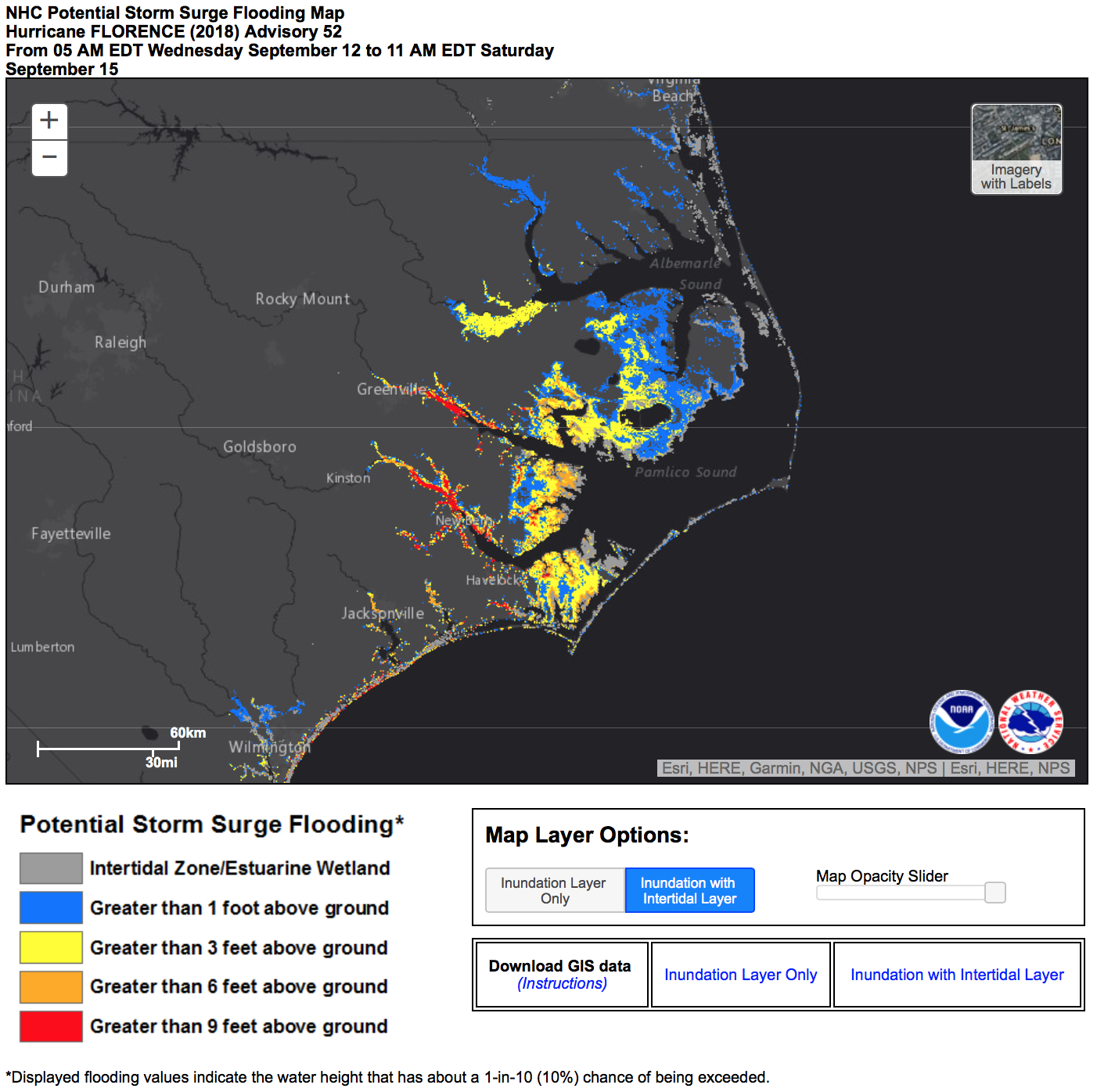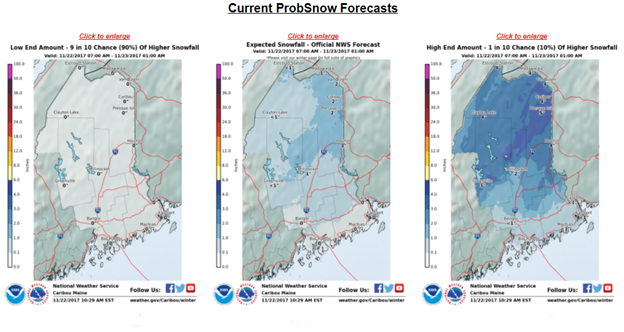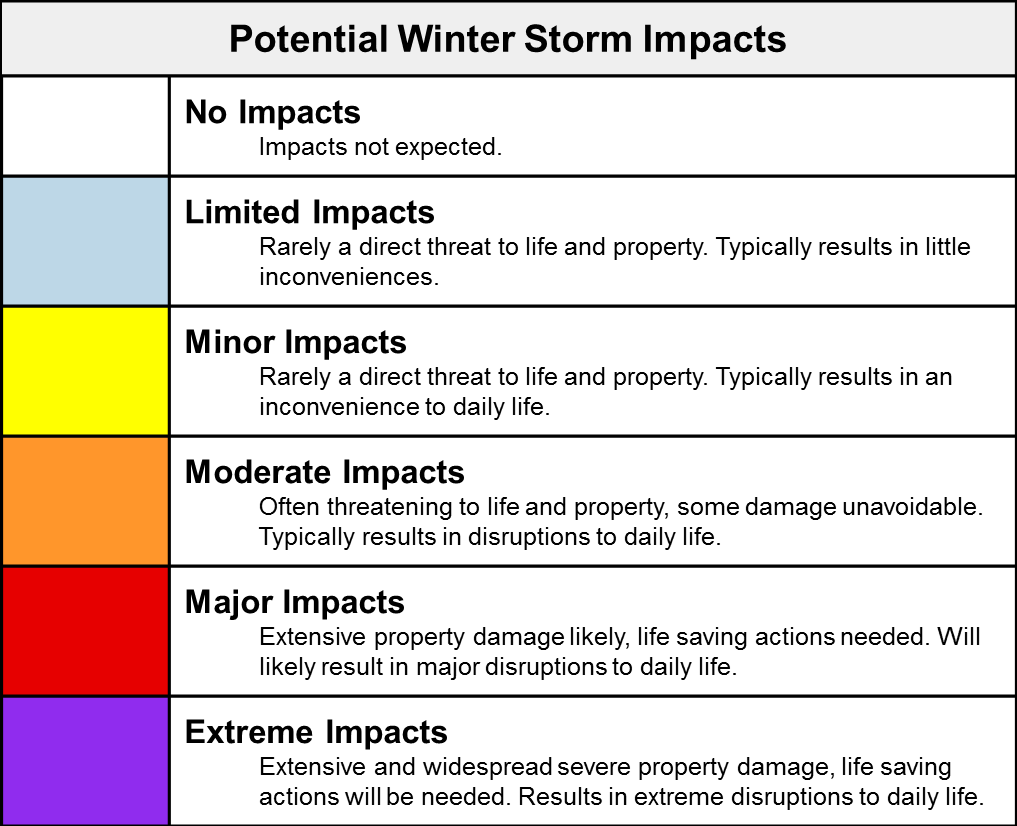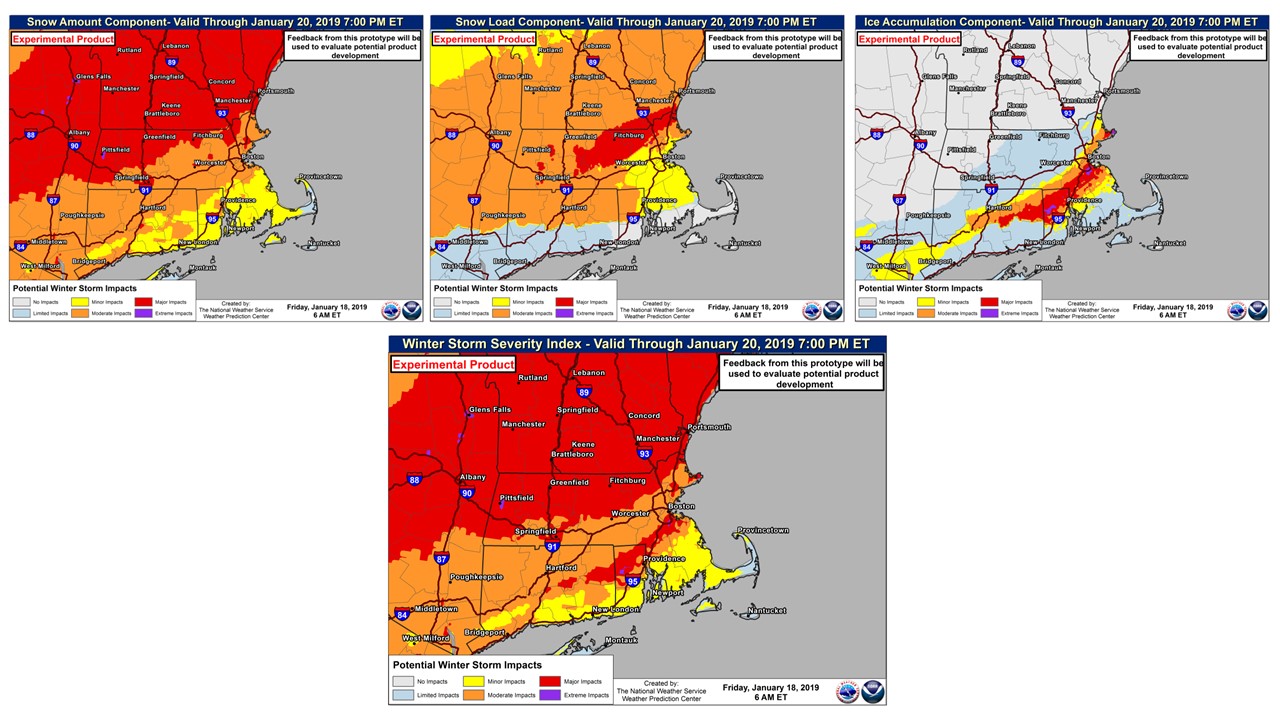Form 068-20905 A0 rev 068-20905 A0 rev National Weather Service (NWS) Survey
American Customer Satisfaction Index "Customer Satisfaction Surveys"
FY20 Q1_Q2_PopupSurvey_FINAL to OMB_20191122
National Weather Service (NWS) 20905 A0 rev
OMB: 1090-0007
NWS 2020 Quarterly Pop-up Customer Satisfaction Survey_Q1 & Q2 FY20
(FINAL v3_11/22/19)
Introduction
Note: Section headers will not be included in online survey. Items in BOLD AND CAPS are programmer instructions. Response options will be randomized, except when sequential. All rated questions will include a “Don’t Know” and/or “NA” option. When a “RANDOMIZE” instruction is provided, any “Other,” “Don’t Know,” “NA,” or “None” style of response will be forced to the bottom of the response set.
Introduction
The National Oceanic and Atmospheric Administration’s (NOAA) National Weather Service (NWS) is committed to serving the needs of all of its users. The NWS is undertaking research on how satisfied users are and would appreciate your feedback. The purpose of this research is to help the NWS improve its services for you and others like you.
Your answers are voluntary, but your opinions are very important for this research. Your responses will be kept completely confidential, and you will never be identified by name. CFI Group, a third-party research and consulting firm, is administering this survey via a secure server. The time required to complete this survey will depend on how certain questions are answered but will likely take about 10 minutes. This survey is authorized by Office of Management and Budget Control No. 1090-0007, which expires September 30, 2021.
Please click on the “Next” button below to begin the survey.
Screeners
Q1. What is your age?
-
Under 15
1
[THANK AND TERMINATE]
15-24
2
25-34
3
35-44
4
45-54
5
55-64
6
65+
7
Q2. Are you familiar with the watches and warnings issued by the NWS as they relate to hazardous flooding, tropical storms/hurricanes, winter weather or extreme cold/wind chill events? Select all that apply.
-
Hazardous Flooding
1
Tropical storms/Hurricanes
2
Winter Weather
3
Extreme Cold/Wind Chill
4
None of the above
5
[THANK AND TERMINATE]
Sources of Weather Information
Q3. What methods do you use to check the weather? Select all that apply. [MULTI-SELECT]
-
Personal computer (i.e., laptop, desktop)
1
Television
2
NOAA Weather Radio/All Hazards
3
Commercial Radio Broadcast
4
Smartphone
5
Tablet
6
Other
7
Q3.1 Which of these selected is your most preferred method?
[PN: Prepopulate Q3.1 with responses from Q3]
Weather Hazard Preparedness
Q4. Do you have a safety plan and/or a safety kit for coping with any of the following hazard types? Select all that apply (PN: Include “Neither” as an option)
-
Safety Plan (e.g., evacuation, shelter, communication)
Emergency Preparedness/Safety Kit/ Disaster Supply Kit
Hazardous Flooding
Hazardous Winter Weather
Lightning
Severe Thunderstorms/Tornadoes
Tropical Storms/Hurricanes
Tsunamis
Wildland Fires
Extreme Heat
NWS Information for Tropical Storms/Hurricanes
Q5. Please think about the information you receive from the NWS regarding tropical storms/hurricanes. Using a scale from 1 to 10 where 1 is “Poor,” and 10 is “Excellent,” please rate the NWS on the following:
[PN: ONLY ASK TROPICAL STORMS/HURRICANES SECTION IF Q2 = 2]
(Select one for each row)
-
Poor 1
2
3
4
5
6
7
8
9
Excellent 10
Don’t Know/NA
Ease of finding tropical storm/hurricane forecast information specific to your geographic area of interest
Accuracy of information for tropical storms/hurricanes
Explaining the threat and expected impacts of tropical storms/hurricanes
Providing information to help you make decisions relative to tropical storms/hurricanes (e.g., remaining indoors, evacuating, sheltering pets/livestock)
[If Q5.4
“Providing
information to help you make decisions…”
<6, ask Q6 otherwise SKIP to next question]
Q6. What could NWS
do to improve your satisfaction with the information they provide
regarding tropical storms/hurricanes? (OPTIONAL)
Contribution to Understanding of Tropical Storms/Hurricanes
[PN: ONLY ASK CONTRIBUTION TO UNDERSTANDING OF TROPICAL STORMS/HURRICANES SECTION IF Q2 = 2]
Q7. How would you rate your current knowledge of tropical storms/hurricanes using a 10-point scale in which 1 means “Not at all knowledgeable” and 10 means “Very knowledgeable”?
Q8. Now please rate the extent to which the information provided by the NWS has contributed to your understanding of the dangers of tropical storms/hurricanes, using a 10-point scale in which 1 means “Not at all” and 10 means “Significantly.”
Storm Surge
[PN: ONLY ASK STORM SURGE SECTION IF Q2 = 2]
Q9. The NWS National Hurricane Center provides an online graphic called a Potential Storm Surge Flooding Map, which shows potential storm surge inundation levels from tropical storms and hurricanes. An example of this tool is pictured below. Have you ever referred to this online resource?

-
Yes
1
No
2
Not sure
3
[PN: If Q9 is 1-YES, go to Q9.1, otherwise SKIP to Q12]
Q9.1 Using a scale from 1 to 10 where 1 is “Poor,” and 10 is “Excellent,” please rate how well the NWS Potential Storm Surge Flooding Map provides the information you need to make informed decisions during an extreme weather event.
NWS Information for Hazardous Flooding
[PN: ASK Q12 & Q13 ONLY IF Q2 = 1]
Q12. Now consider the information you receive from the NWS regarding hazardous flooding. Using a scale from 1 to 10 where 1 is “Poor,” and 10 is “Excellent,” please rate the NWS on the following:
(Select one for each row)
-
Poor 1
2
3
4
5
6
7
8
9
Excellent 10
Don’t Know/NA
Ease of finding hazardous flooding forecast information specific to your geographic area of interest
Accuracy of information for hazardous flooding events
Explaining the threat and expected impacts of hazardous flooding events
Providing information to help you make decisions relative to hazardous flooding (e.g., avoiding flooded roadways, evacuating, moving personal property, moving to higher ground)
Q13.
[If “providing information to help you make decisions…”
<6]
Please indicate
what the NWS can do to improve your satisfaction with the information
they provide regarding hazardous flooding. (OPTIONAL)
Contribution to Understanding of Hazardous Flooding
[PN: ASK Q14 & Q15 ONLY IF Q2 = 1]
Q14. How would you rate your current knowledge of hazardous flooding using a 10-point scale in which 1 means “Not at all knowledgeable” and 10 means “Very knowledgeable”?
Q15. Now please rate the extent to which the information provided by the NWS has contributed to your understanding of the dangers of hazardous flooding, using a 10-point scale in which 1 means “Not at all” and 10 means “Significantly.”
NWS Information for Winter Weather
[PN: ASK Q16 & Q17 if Q2 = 3]
Q16. Please think about the information you receive from the NWS during this season regarding winter weather (e.g., snow, sleet, freezing rain). Using a scale from 1 to 10 where 1 is “Poor,” and 10 is “Excellent,” please rate NWS on the following:
(Select one for each row)
-
Poor 1
2
3
4
5
6
7
8
9
Excellent 10
Don’t Know/NA
Ease of finding winter weather forecast information specific to your geographic area of interest
Accuracy of winter weather forecasts
Explaining the threat and expected impacts of winter weather
Providing information to help you make decisions relative to winter weather events (e.g., stay home, go to supermarket, drive versus taking public transportation)
[PN: If any response within Q16 is <6, ask Q17, otherwise SKIP to Q18]
Q17. Please indicate what NWS can do to improve your satisfaction with the information they provide regarding winter weather. (OPTIONAL)
Contribution to Understanding of Winter Weather
[PN: Ask Q18 & Q19 if Q2 = 3]
Q18. How would you rate your current knowledge of winter weather using a 10-point scale in which 1 means “Not at all knowledgeable” and 10 means “Very knowledgeable”?
Q19. Now please rate the extent to which the information provided by the NWS has contributed to your understanding of the dangers of winter weather, using a 10-point scale in which 1 means “Not at all” and 10 means “Significantly.”
NWS Information for Extreme Cold/Wind Chill
[PN: Ask Q20 &Q21 if Q2 = 4]
Q20. Now consider the information you receive from the NWS regarding extreme cold/wind chills. Using a scale from 1 to 10 where 1 is “Poor,” and 10 is “Excellent,” please rate NWS on the following:
(Select one for each row)
-
Poor 1
2
3
4
5
6
7
8
9
Excellent 10
Don’t Know/NA
Ease of finding extreme cold/wind chill information specific to your geographic area of interest
Accuracy of information for extreme cold/wind chills
Explaining the threat and expected impacts of extreme cold/wind chills
Providing information to help you make decisions relative to extreme cold/wind chills (e.g., expect dangerous driving conditions; keep a flashlight, food and water in your vehicle in case of emergency)
Contribution to Understanding of Extreme Cold/Wind Chill
[PN: Ask Q21 & Q22 if Q2 = 4]
Q21. How would you rate your current knowledge of extreme cold/wind chill using a 10-point scale in which 1 means “Not at all knowledgeable” and 10 means “Very knowledgeable”?
Q22. Now please rate the extent to which the information provided by the NWS has contributed to your understanding of the dangers of extreme cold/wind chill, using a 10-point scale in which 1 means “Not at all” and 10 means “Significantly.”
Probabilistic Snow Forecasts
[PN: Ask Q23, Q24 & Q25 if Q2 = 3]
The
Probabilistic Snow Forecasts contain probabilities that represent the
percent chance of receiving the amount of snow shown on the map. The
purpose of these probabilistic snowfall products is to provide a
range of snowfall possibilities to better communicate forecast
uncertainties during winter weather events. An example of this
forecast is pictured below.
Q23. How would you rate your
current knowledge of the probabilistic snow total forecasts
concerning heavy snow on a scale of 1 to 10, where 1 means “very
low knowledge” and 10 means “very high knowledge”
(i.e., an expert)?
Q24. Using a 10-point scale where 1 means “not at all satisfied” and 10 means “very satisfied,” please rate your level of satisfaction with the probabilistic snow total forecasts provided by NWS.

Winter Storm Severity Index
[PN: Ask Q26, Q27 & Q28 if Q2 = 3]
The winter storm severity index (WSSI) uses current NWS forecast to raise situational awareness with respect to potential winter weather hazards. While watches, warning, and advisories are generally based on thresholds, impacts of winter weather are based on many factors. The WSSI attempts to capture the expected severity of potential societal impacts due to expected winter hazards and their distribution by considering six components: snow amount, snow load, blowing snow, ground blizzard, ice accumulation, and flash freeze potential.
Q26. How would you rate your current knowledge of the WSSI products concerning hazardous winter weather on a scale of 1 to 10, where 1 means “very low knowledge” and 10 means “very high knowledge” (i.e., an expert)?
Q27. Using a 10-point scale where 1 means “not at all satisfied” and 10 means “very satisfied,” please rate your level of satisfaction with the WSSI products.


[PROGRMMING NOTE: All respondents receive the remaining sections that follow: Social Media/Websites, CSI, Desired Outcomes, Demographics, Close]
Social Media/Websites
Q29. People rely on various sources for information during winter weather-related events. Please rate each of the following sources of information about weather events using a scale from 1 to 10 where 1 is “Poor” and 10 is “Excellent”.
National Weather Service Social Media Accounts (e.g., Facebook, Twitter, Instagram).
Other Social Media Accounts (e.g., The Weather Channel, Facebook/ Twitter/Instagram, Weather Underground Facebook/Twitter/Instagram).
National Weather Service Website (e.g., weather.gov)
Commercial Websites (e.g., weather.com,, accuweather.com)
Mobile applications
Other (please specify) (CAPTURE)
Customer Satisfaction Index (CSI)
Q30. Now, please consider all your experiences with the NWS. Using a 10-point scale where 1 means “Very Dissatisfied” and 10 means “Very Satisfied,” how satisfied are you with the NWS?
-
Very Dissatisfied 1
2
3
4
5
6
7
8
9
Very Satisfied 10
Overall Satisfaction with the NWS
[If Q30 <6, ask Q31, otherwise SKIP to Q32]
Q31. Please
indicate what the NWS should change to improve your satisfaction.
(OPTIONAL)
Q32. Using a 10-point scale where 1 now means “Falls Short of your Expectations” and 10 means “Exceeds Your Expectations,” to what extent has the NWS fallen short of or exceeded your expectations?
-
Falls Short Of Your Expectations 1
2
3
4
5
6
7
8
9
Exceeds Your Expectations 10
How well the NWS has met your expectations
Q33. Now, imagine what an ideal organization providing weather information would be like. Using a 10-point scale where 1 means “Not Very Close to the Ideal,” and 10 means “Very Close to the Ideal,” how well do you think the NWS compares with that ideal weather information provider?
-
Not Very Close to the Ideal
1
2
3
4
5
6
7
8
9
Very Close to the Ideal
10
NWS compared to an ideal weather information provider
Desired Outcomes
Q34. Using a scale from 1 to 10 where 1 means “Not at All Likely” and 10 means “Very Likely,” please indicate how likely you are to:
-
Not at All Likely 1
2
3
4
5
6
7
8
9
Very Likely
10
Don’t Know
Take action based on the information you receive from the NWS
Use the NWS as a source of weather information in the future
Recommend the NWS to a colleague or a friend
Q35.
Please share with us any
final thoughts about your experience with the NWS, including how we
can improve our services to you and what you value most about our
services. (OPTIONAL)
Demographics and Additional Background
[PN: Program all demographics/background questions “optional”]
We’re almost done! We would like to ask you just a few more questions:
Q36.
Please enter your zip code (Text
Box)
Q37. What is your gender?
-
Male
1
Female
2
Prefer not to answer
3
Q38. What is your race or origin? (PN: Randomize selections)
-
White/Caucasian
1
Black/African American
2
Hispanic or Latino
3
Native Hawaiian or Other Pacific Islander
4
Asian
5
American Indian or Alaska Native
6
Other (please specify)
7
Prefer not to answer
8
Q39. What is the highest degree or level of education that you have completed?
-
12th grade or less (no diploma)
1
High school diploma or GED
2
Some college, no degree
3
Associate or technical degree
4
Bachelor’s degree
5
Graduate/Professional degree
6
Don’t know
7
Prefer not to answer
8
Q40. What was your household income last year?
-
Less than $20,000
1
Between $20,000 and $29,999
2
Between $30,000 and $39,999
3
Between $40,000 and $49,999
4
Between $50,000 and $59,999
5
Between $60,000 and $79,999
6
Between $80,000 and $99,999
7
$100,000 or more
8
Don’t know
9
Prefer not to answer
10
Close
Those are all the questions we have. Please click “Submit” below to finalize your responses. Thank you for your participation!
![]()

| File Type | application/vnd.openxmlformats-officedocument.wordprocessingml.document |
| File Title | DIRECTV |
| Author | Doug Helmreich |
| File Modified | 0000-00-00 |
| File Created | 2021-01-15 |
© 2025 OMB.report | Privacy Policy